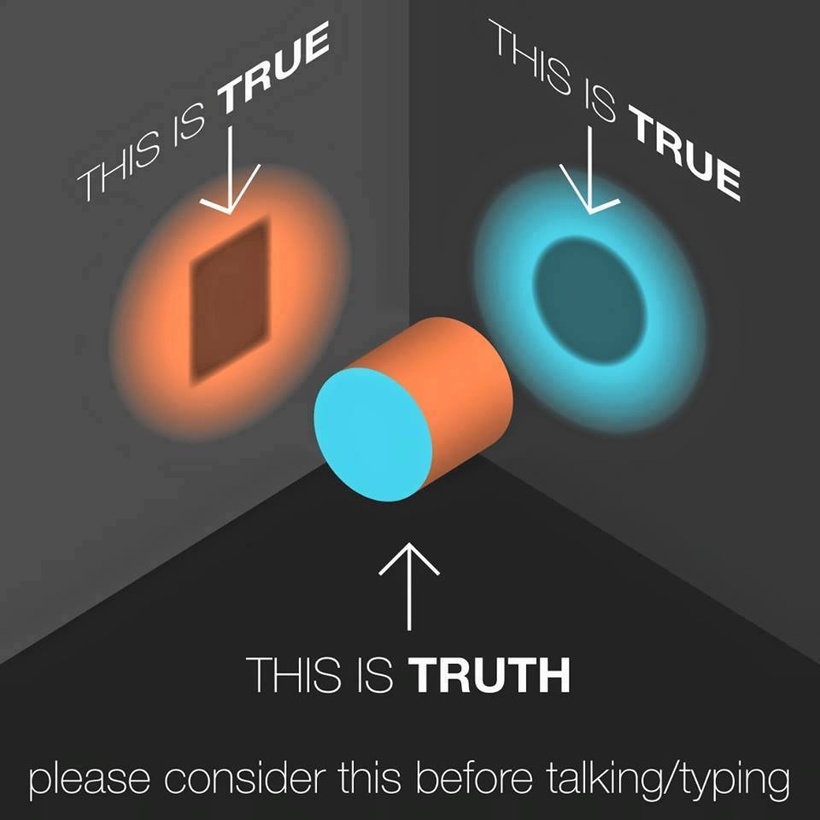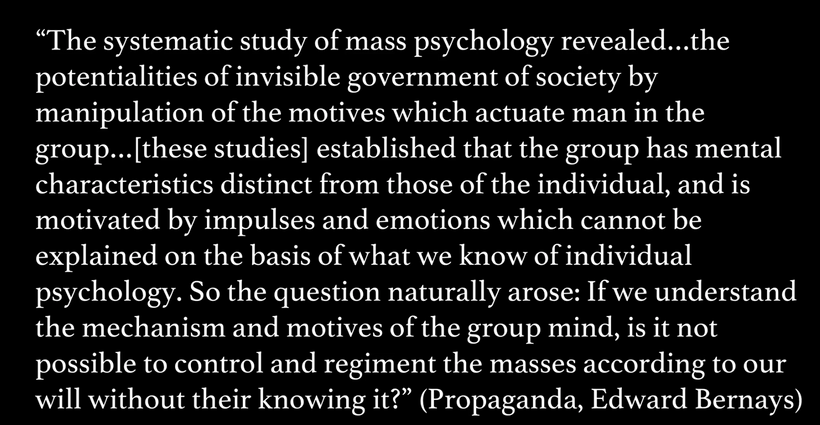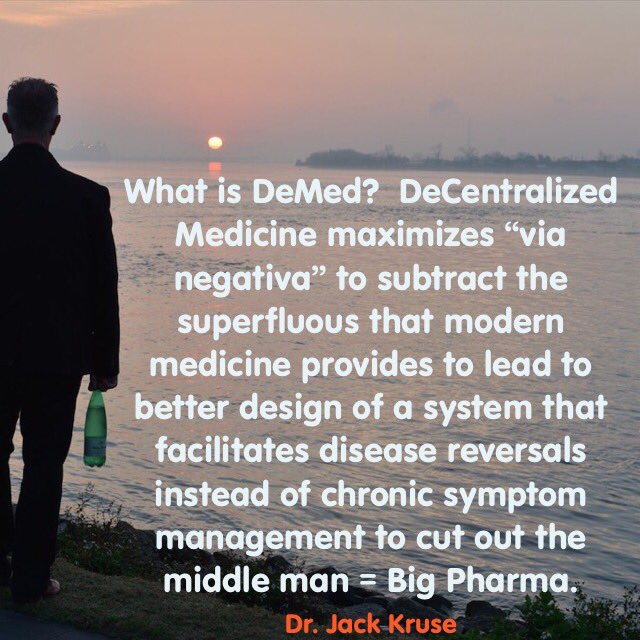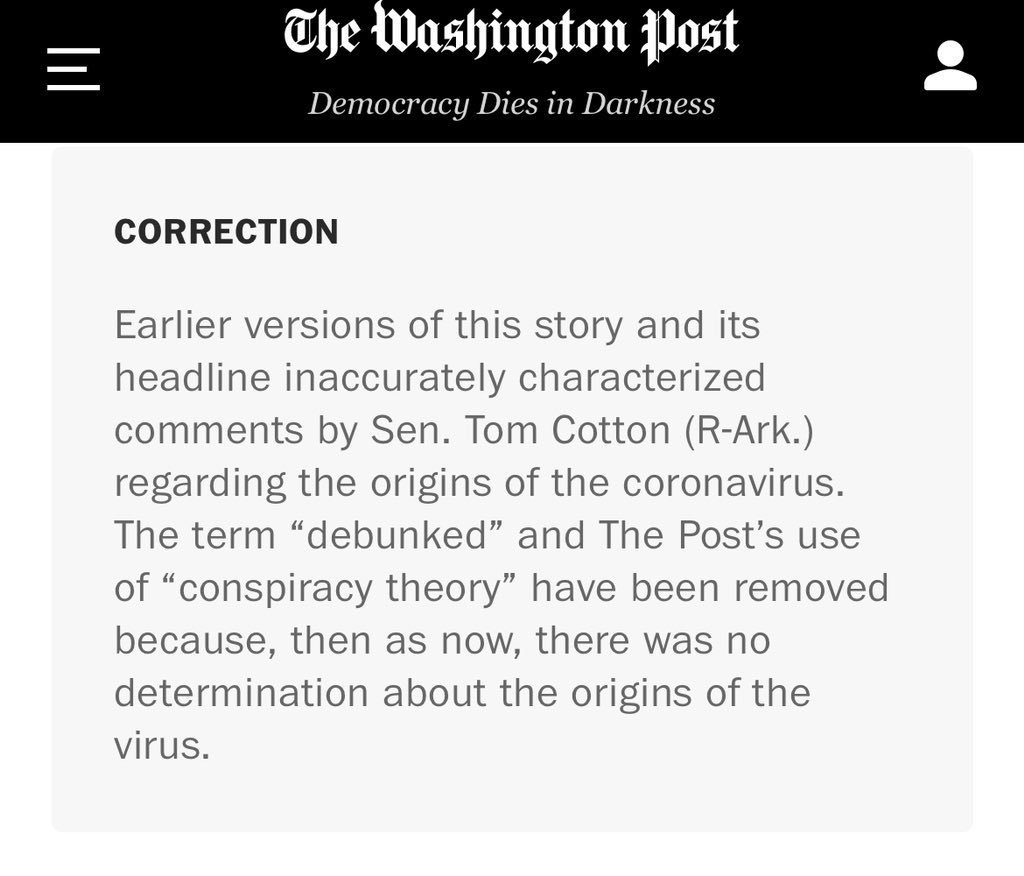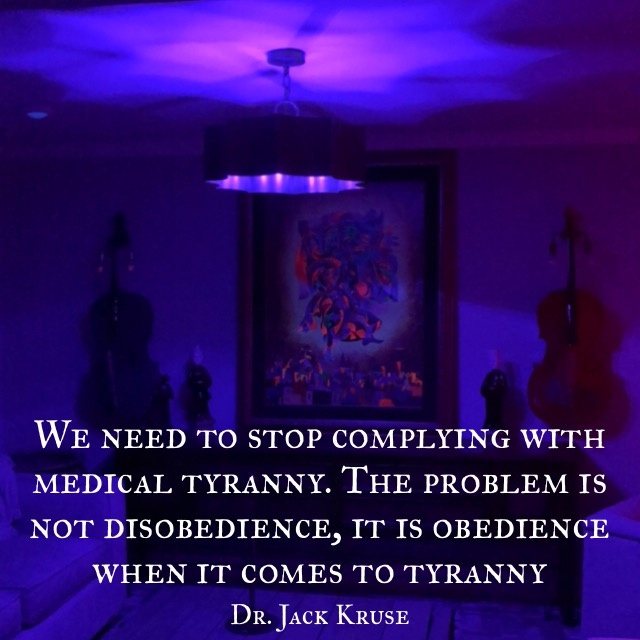
Since the 19th century, light was known to be a wave of electric and magnetic fields. In the early 20th century, the physics revolution known as quantum mechanics included the alternative description of light as a collection of particles called photons. Roy Glauber of Harvard University realized that with the invention of the laser and the detectors capable of sensing a single photon, a complete quantum theory of light was needed. One single photon can control many atoms. His theory, published in 1963, explained that photons are not entirely independent objects and that detecting a photon from a light beam affects the probability of detecting another photon. His theory marked the birth of the field of quantum optics, which led to a wide range of advances, such as a type of optics-based cryptography that has already been used for some bank transactions. Glauber shared the 2005 Nobel Prize in physics for his work. My bet is that Glauber’s work will revolutionize neuroscience and medicine one day. Light and atoms are the fundamental building blocks life uses to organize in a circadian fashion. Light and atomic interactions build the illusion of biologic time in your brain.
You have optical lattice clocks in your eyes connected directly to your brain.
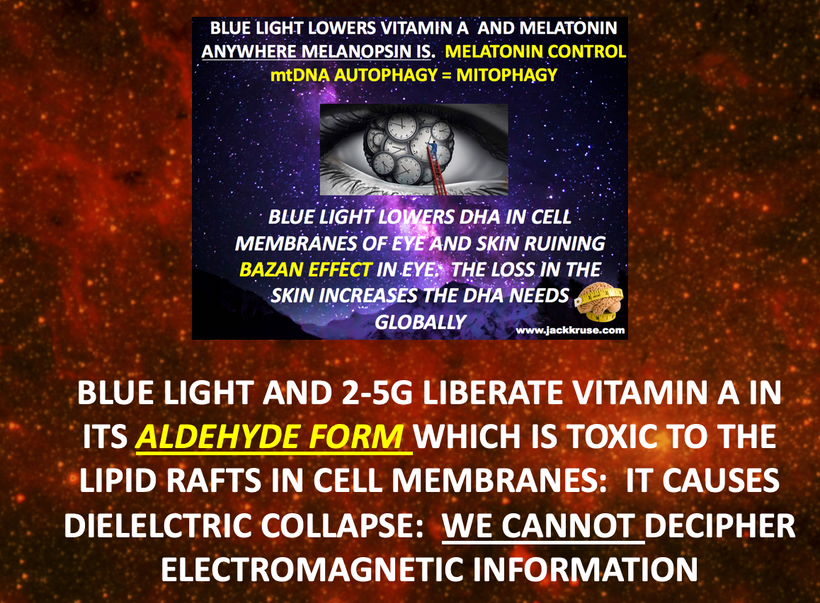
Darker days and brighter nights makes these clocks tell your brain the wrong time. When your brain can’t tell time correctly, lifetime speeds up for you and healthspan contracts. These effects should make you ask one question.
WHAT IS A CLOCK FROM A PHYSICS PERSPECTIVE?
Everything can and should be thought of as a clock.
Garbage announces the days with its worsening smell. Wrinkles mark the years. You can actually tell time by measuring how cold your coffee has gotten on your coffee table.
Quantum thermodynamics, disciplines concern the flow of information and energy, while providing the right language for describing clocks. All clocks work by proof of work to describe information/energy consumption. When you truly get this perspective, it will occur to you that actually a clock is a thermal machine that creates the illusion of time. Like an engine, a clock harnesses the flow of energy to do work, producing exhaust in the process. Engines use this energy to propel; and clocks use it to tick. The exhust in cells is codified in the CO2 and water created with the amount of heat generated. Entropy, in the form of energy or information — is the quantity whose incessant rise in the universe is closely associated with the arrow of time.
A clock is anything that undergoes irreversible changes: changes in which energy spreads out among more particles or into a broader area. Energy tends to dissipate — and entropy, a measure of its dissipation, tends to increase — simply because there are far, far more ways for energy to be spread out than for it to be highly concentrated. This numerical asymmetry, and the curious fact that energy started out ultra-concentrated at the beginning of the universe, are why energy now moves toward increasingly dispersed arrangements, one cooling coffee cup at a time.
Coffee doesn’t make a great clock for cells. As with most irreversible processes, its interactions with the surrounding air happen stochastically (probability based). This means you have to average over long stretches of time, encompassing many random collisions between coffee and air molecules, in order to accurately estimate a time interval. This is why we don’t refer to coffee, or garbage or wrinkles, as clocks.
We reserve the name clock, a clock thermodynamicists would realized, for objects whose timekeeping ability is enhanced by periodicity: some mechanism that spaces out the intervals between the moments when irreversible processes occur. A good clock doesn’t just change. It ticks. Biological clocks use light and dark to increase the fidelity of the tick tock ticking.
The more regular the ticks, the more accurate the clock. The greater a clock’s accuracy, the more energy it dissipates and the more entropy it produces in the course of ticking. This is a key point you should read several times.

The implication of this idea is that a clock is a flow meter for entropy.
An ideal clock — is one that ticks with perfect periodicity — it would burn an infinite amount of energy/information and produce infinite entropy, which isn’t possible on Earth. Thus, the accuracy of clocks is fundamentally limited. Mother Nature knew this 3.8 billion years ago. So how did she adapt? She uses the smallest units available to begin construction of her clocks, atoms.
The most simple clock is a quantum system consisting of three atoms. A “hot” atom connects to a heat source, a “cold” atom couples to the surrounding environment, and a third atom that’s linked to both of the others “ticks” by undergoing excitations and decays. Energy enters the system from the heat source (sun), driving the ticks, and entropy is produced when waste energy gets released into the environment. Thermodynamic researchers have calculated that the ticks of this three-atom clock become more regular the more entropy the clock produces. This means that sunlight makes your circadian clocks more accurate daily because it is the heat source for the clocks in you. This is the main relationship between clock accuracy and entropy.

In 1948 Claude Shannon paper showed that entropy also inversely tracks with information.This is found in his equation below. This means that the less information you have about a data set, the higher its entropy is. In precise terms, entropy is a measure of the number of possible arrangements that a system of particles can be in. This is important in understanding how Nature engineered your clocks.
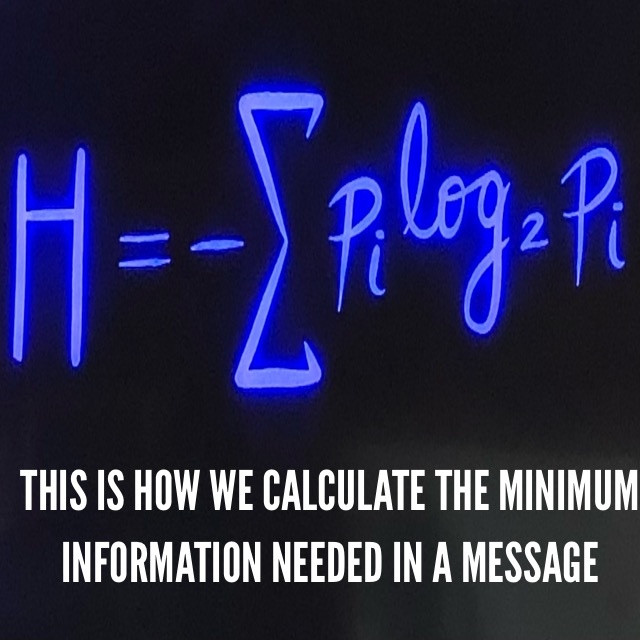
These possibilities grow when energy/information are spread more evenly among more particles, which is why entropy rises as energy/information disperses. Shannon showed us why there is any limit on a clock’s entropy production should naturally correspond to a limit of information that can pass from the sun to our cells.

The Shannon limit or Shannon capacity of a communication channel (Sun-RBCs) refers to the maximum rate of error-free data that can theoretically be transferred over the channel if the link is subject to random data transmission errors, for a particular noise level.
CO, NO, DNA methylation patterns are examples of noise your cells have to deal with daily. More on this later. This “noise” ruins their ability to decipher the circadian messages/levers in sunlight that control the proteins and lipids in your cells to pull off the things living things can.
Mother Nature realized 4 billion years ago how to create a better biologic clock. She took the 3 atom clock and improved it by adding atomic complexity to work with light from the sun 93 million years away from Earth. She expanded on their three-atom clock model by adding complexity to its mechanism — essentially extra hot and cold atoms connected to the ticking atom that was driven by sunlight.

This idea showed that this additional complexity enables a clock to “concentrate the probability” of a tick happening into narrower and narrower windows of time, thereby increasing the regularity and accuracy of the clock. The use of tryptophan and methionine use in cells were critical to the circadian clock mechanism in cells. The primordial state of life was always sleep and we evolved wakefulness as our clock timing mechanism got more complex.
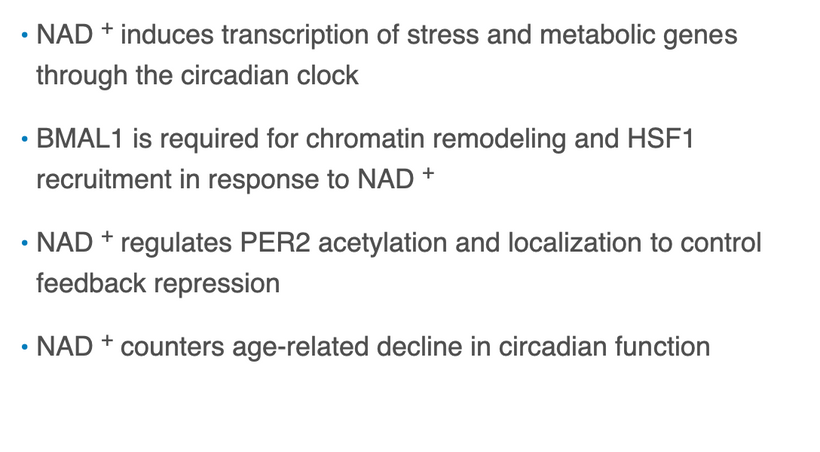
Mother Nature added aromatic amino acids to cells whose electrons could be excited by light to stimulate the mitochondrial membrane to vibrate. NAD+ is made by tryptophan. So is melatonin. This idea is used in MRI when we use pulsed RF to alter proton spin to create an image. It can also be simulated in a lab with white noise — a random mix of radio frequencies. The frequencies created that resonated with the membrane can drive its vibrations. The noise of the RF can simulate a heat source, and the vibrations in membranes can mimic the ticks of a clock. The manner in which the inner mitochondrial membrane vibrates alters is frequency to consume or stored energy and information. We can tell from the energy/information dissipation in the circuit itself how much the entropy changes. As entropy varies we vary how we experience time in reality.
The mitochondrial heteroplasmy rate in an organ is a function of the entropy level in the clock timing mechanism.
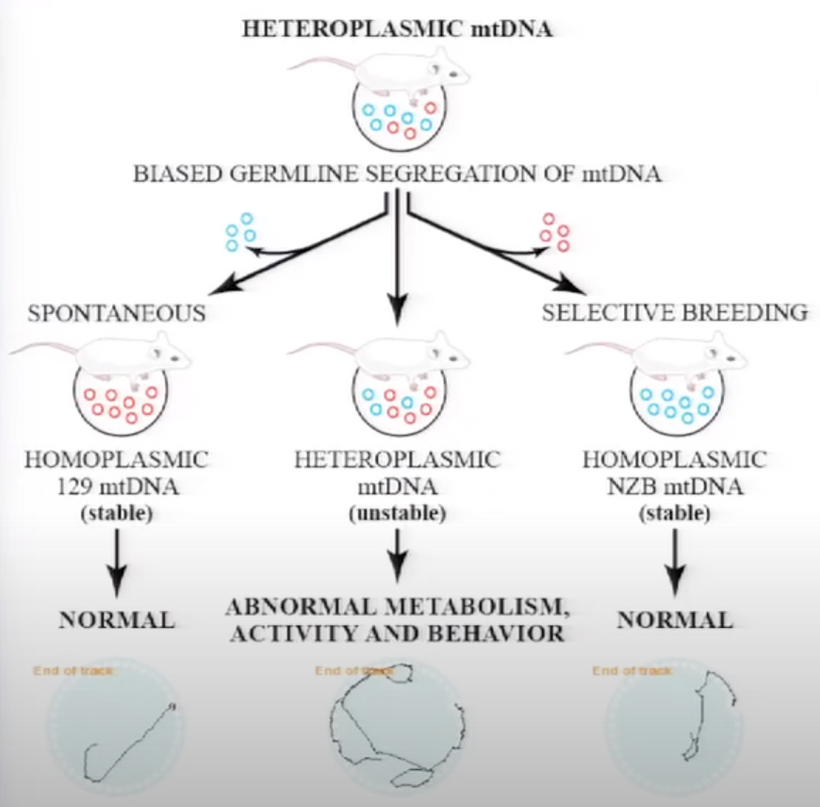
The speed of evolutionary change of light sources humans live under has far out stripped the ability of our clock genes to catch up. Today’s use of artificial light and nnEMF is what is causing all modern disease epidemics. Understanding the quantum engineering is critical in understanding this perspective.
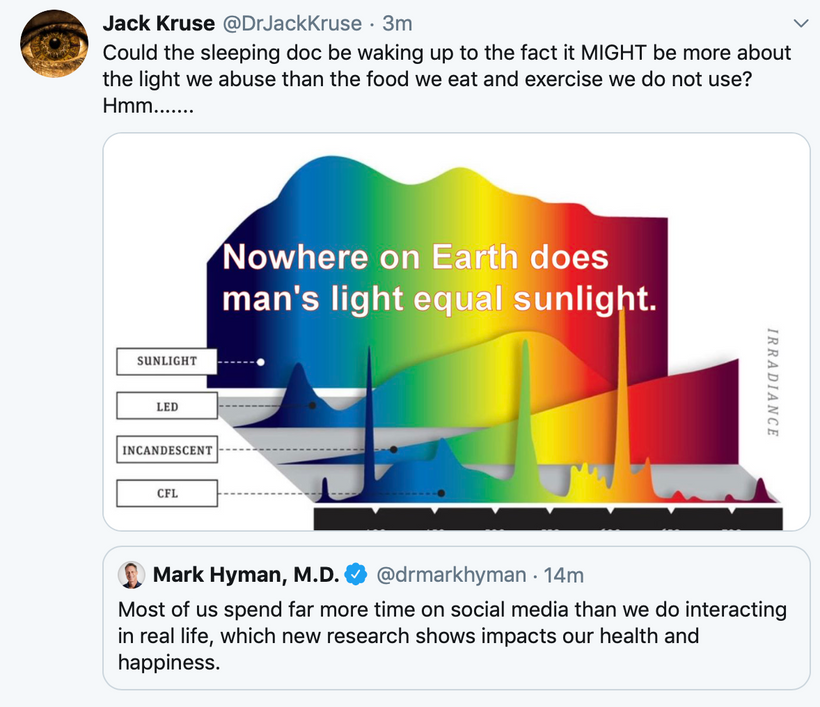
If you understand the link of energy and information to the entropy equations of Boltzman and Shannon, there should be a linear relationship between entropy production and accuracy in clocks.
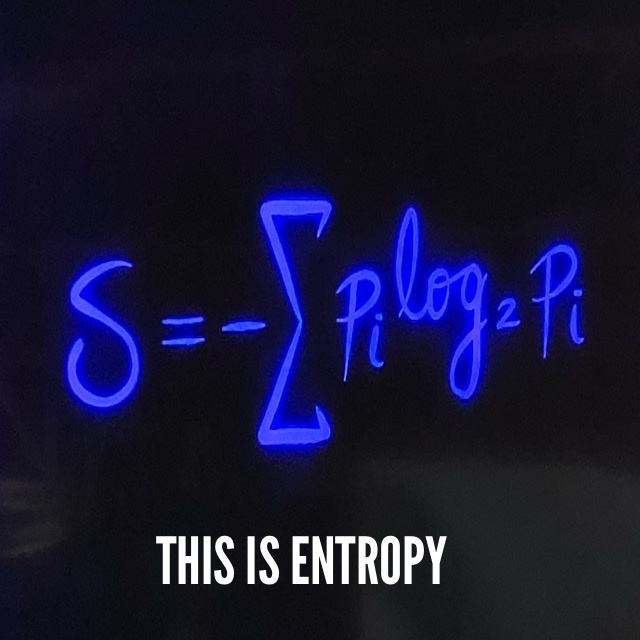
This idea is buried in the entropy equations of Boltzman (above) and Shannon (below) which are close to identical. No one seems to realize how fundamental these relationships are. The circadian clock mechanism is what creates the illusion of time in our brain at the suprachiasmatic nucleus.
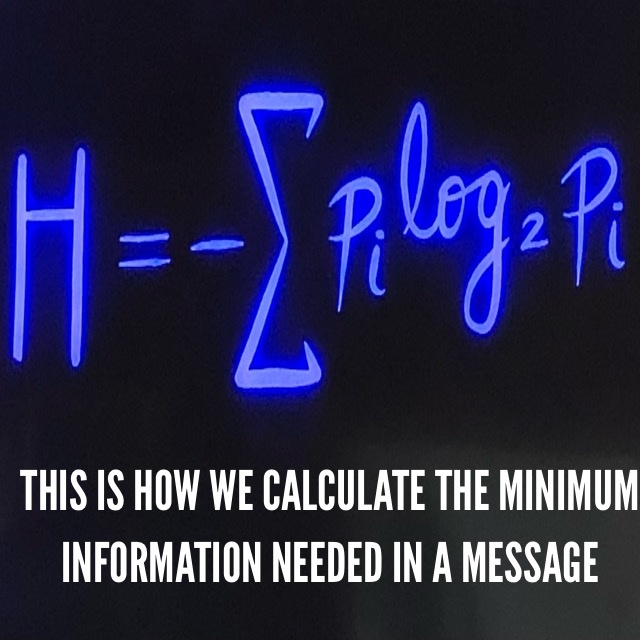
The regularity of the inner mitochondrial membrane clock’s vibrations should directly be tracked with how much energy entered the system at cytochrome one (Tryptophan present in ctochrome 1 = NAD+/NADH couple) and how much entropy it produced with the oscillation in the inner mitochondrial membrane. 100 Hz correlates with optimized fat burning in the heat engine of the mitochondria. This is when the clock timing mechanism operates well.
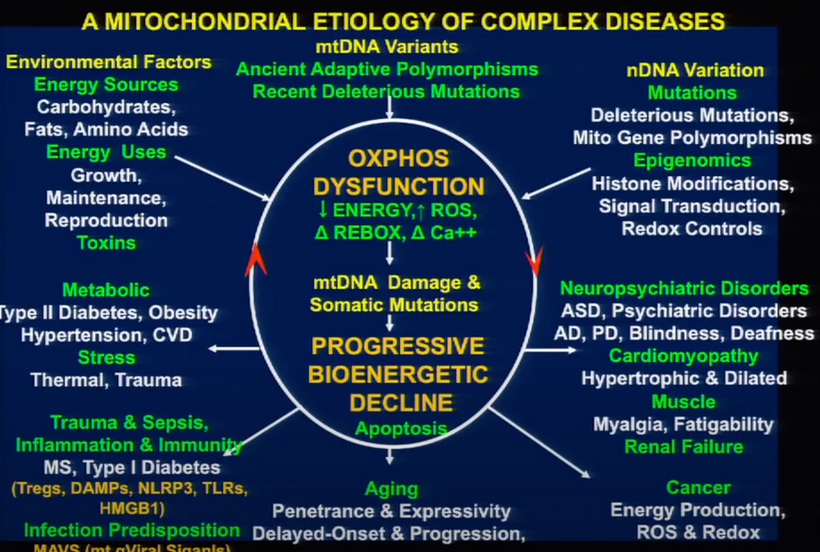
Time will appears to pass slower when this occurs and helathspan should be the phenotype humans experience. Anything that lowers the oscillation rate on the inner mitochondrial membrane will lower healthsapn and longevity because the thermodynamics of the clock mechanism is not optimized. The SCN can recalibrate the clock daily to increase its ability to tell time properly, with respect to entropy creation and or flow if the skin and eye see the sun as it rises every day to recalibrate the clock. Why?
The human circadian timing system is not exactly 24 hours because when life evolved on Earth an Earth day was shorter than it is today, Mother Nature built the clocks to be adaptable to light exposure, therefore, it needs to be entrained every day at sunrise and sunset. Because the amount of daylight is linked to the distance of the moon from Earth, and it varies as well, lunar cycles also help fine tune circadian clock function in amazing ways.
The findings suggest that the thermodynamic equations that science has now derived may hold universally for timekeeping devices.
SUMMARY
In general, SunLIGHT properly entrains the central circadian clock and FOOD entrains peripheral clocks in humans. This is a 30,000 foot view of how the system works in you. Artificial light ruins both clock timing mechanisms in the body. That’s why we try to get a big breakfast and go outdoors in the morning as the Leptin Rx prescribes.
Behavioral rhythms your exhibit in your life are driven by molecular rhythms that link directly to how your circadian clock is built. This means they are adaptable if you alter light in your life to benefit the clock mechanism.
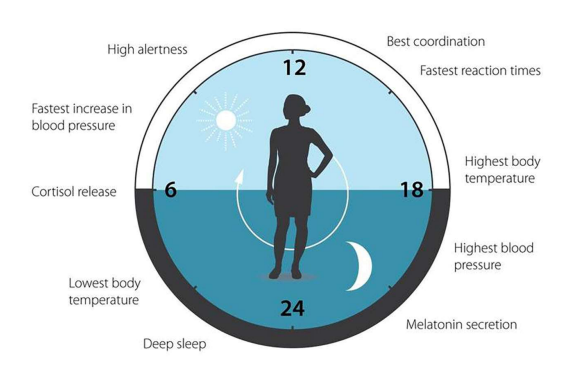
The human circadian timing system is not exactly 24 hours, therefore, it needs to be entrained every day. This is why never missing a sunrise is paramount. Environmental light is the most important zeitgeber for setting the central pacemaker, the SCN. This is why seeing the sunrise is the smartest thing one should do to limit DNA methylation problems from building up in your organs. This alters how your cells account for entropy flow.

Sunlight also controls the epigenetic modifications to your clock mechanism and directly affects your health span and aging. Several biomarkers of healthy aging have been proposed in recent years, including the epigenetic clocks, based on DNA methylation (DNAm) measures, which are getting increasingly accurate in predicting the individual biological age. The recently developed “next-generation clock” DNAmGrimAge outperforms “first-generation clocks” (SCN) in predicting longevity and the onset of many age-related pathological conditions and diseases. Additionally, the total number of stochastic epigenetic mutations (SEMs), also known as the epigenetic mutation load (EML), has been proposed as a complementary DNAm-based biomarker of healthy aging. The more DNA methylation you have in tissues the more quickly you will get sick and age faster.
The reason this happens is that DNA methyaltion alters the expression dynamics of gene products on your X and Y chromosomes.
The epigenetic mutation load (EML) your tissues carry is key to understand how Nature built your clock timing mechanism. A higher EML has been associated with age-related pathological conditions like X chromosome activation skewing. Chromatin marking is controlled by the circadian clock in humans. BMAL1 is a clock gene and HSF1 is a heat shock protein. Both get optimized by sunlight exposure. HSF1 is an important transcription factor for induction of NAT1 in human cells and is required for androgen activation of the NAT1 promoter. This is why Neil Armstrong had life long problems with his testosterone levels when he returned from the moon and it is why so many women struggle with sex hormone problems in their lives when they are filled with methylation problems from alien light. This is how we inactivate the X chromosome to limit disease and create time. See the second line in the slide below.
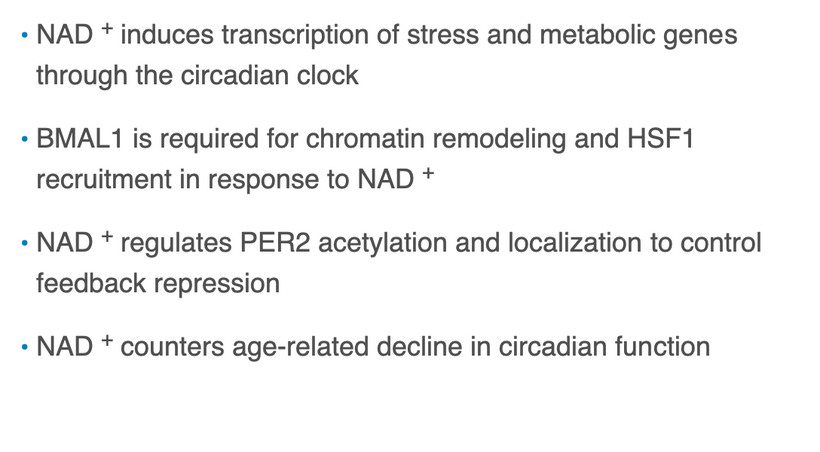
In humans and other mammals, female cells carry two X-chromosomes, whereas male cells carry a single X and Y-chromosome. The X chromosome in humans follows the inheritance patterns in mitochondria.
Biologically male people always inherit their X chromosome from their mother. This is not true in females because they have two copies of the X chromosome, one from each parent. The human X chromosome is about three times larger than the Y chromosome, containing about 900 genes, while the Y chromosome has about 55 genes. Female mammals have two X chromosomes in every cell. However, one of the X chromosomes is inactivated. Inactivation is done randomly and the offspring female can inherit her dominant X chromosome from either parent.
To achieve an equal expression level of X-linked genes in both sexes, a dosage compensation mechanism evolved, which results in transcriptional silencing of one X-chromosome in females. X chromosome inactivation (XCI) is random with respect to the parental origin of the X, occurs early during embryonic development, and is then “stably maintained” through a near infinite number of cell divisions. DNA methylation alters this “delicate stability” pattern in the X chromosomes.In essence, excessive DNA methylation seems to cause us to lose the ability to properly silence the genes on the X chromosome and this seems to lead to diseases of aging in humans.
In multicellular organisms like humans, specificity of cell types is maintained by mitotically heritable differences in gene expression, which are in part regulated by epigenetic mechanisms. These include RNA-based mechanisms, histone modifications, and DNA methylation. DNA methylation can only happen on cytosine residues on DNA.
The full range of epigenetic marks in humans is currently unknown but is potentially enormous, considering that the diploid human epigenome contains >10^8 Cytosines (of which >10^7 are CpGs) and >10^8 histone tails that can all potentially vary clock gene expression. Aberrant DNA methylation patterns have been linked to genomic instability and increased mutation rates in humans. If you recall when I mentioned Scott Kelly’s trip into space he came back with massive amount of DNA methylation patterns which predicted he would face more diseases early and die earlier. His recent biography appears to bear this out.

NASA knows this is a huge risk to astronauts going into orbit. The moon is more damaging and likely why the USA has not been back since 1971. I believe they are trying to figure out a way to hack this problem to get humans to explore Mars.
If you are understanding this blog well, you can now see how nnEMF destroys the clocks built in you, to cause disease.
Interestingly, altered DNA methylation seems to be involved in the pathogenesis of other age-related diseases in humans, such as cardiovascular, neurological and metabolic disorders, and autoimmune diseases.
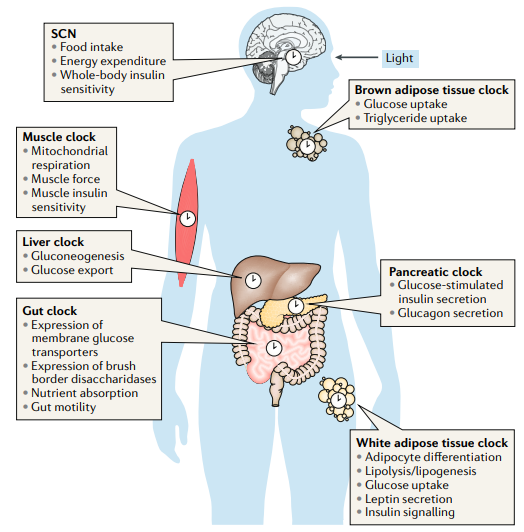
A fundamental biological property of epigenetic, and in particular DNAm modifications, is the potential reversibility of the effect, raising questions about the possible slowdown of epigenetic aging by modifying one’s lifestyle by using sunlight, darkness, and food timing.
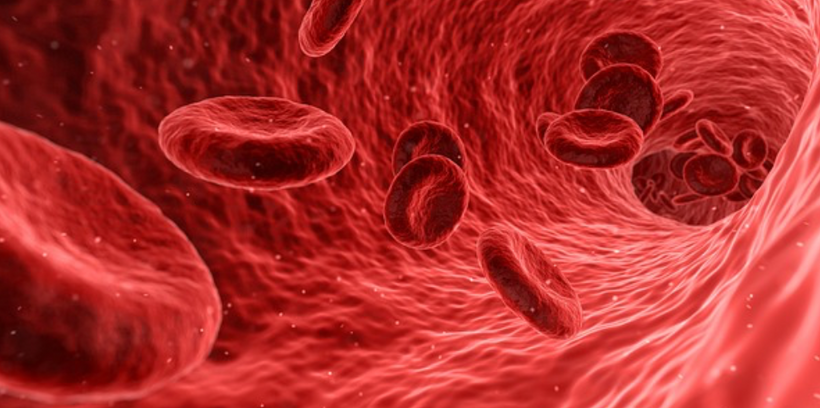
Daytime sunlight optimizes endogenous carbon monoxide (CO) levels created from the turnover of bilirubin in RBCs which should be getting irradiated just below your skin surface assuming your skin is in the game. What if your skin is not in the game? Endogenous CO disrupts the clocks in your body further and their timing mechanism is off allowing for more entropy in the circulatory system. Babies born with jaundice are more subject to diseases of aging associated with the activated X chromosome.

When this happens arteries lose more nitric oxide and Heart Rate variability becomes more ordered and less chaotic. Blood flow hydrodynamics is non laminar and more turbulant. The charges in the arterial wall, cell membranes of the RBCs, and the proteins in the blood all are lowered. This change in charge makes the blood more viscous, it loses its thixotrophic qualities, and it loses its magnetohydrodynamic power to be recharged by sunlight in subsequent days.

As this persists, the amount of adenosine created in the blood and body is reduced and this destroys sleep cycles and creates brain fog due to sluggish flow of blood into the brain.
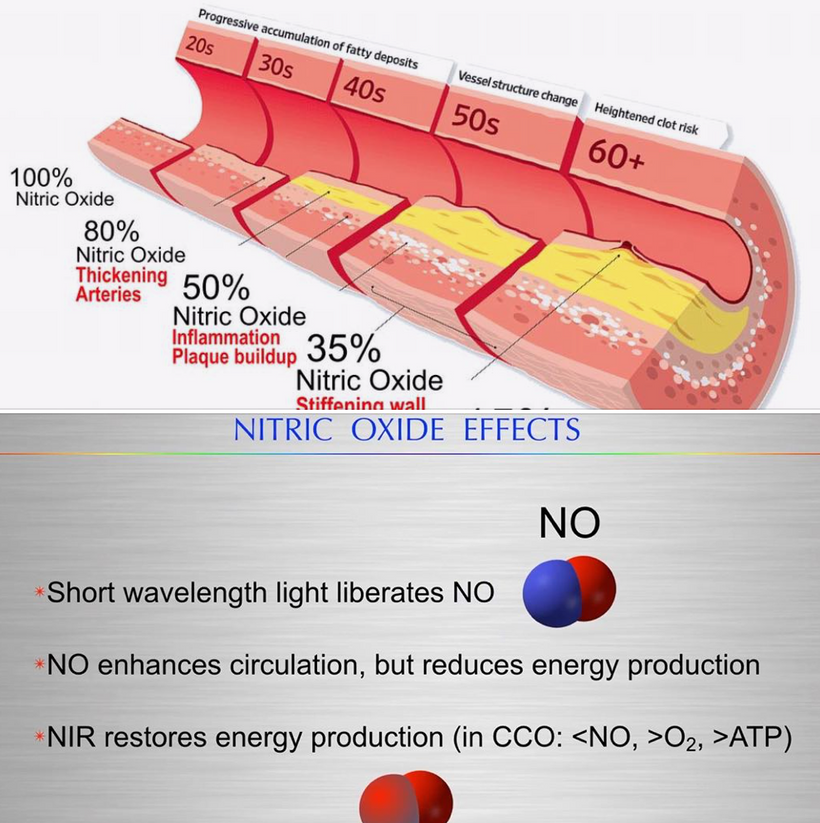
Feedback of metabolic signals, such as the mitochondrial redox state, NAD+/NADH ratios, AMPK pathways, and adenosine/AMP/ADP ratios, or heme production, modulate circadian rhythms and thereby optimize energy utilization across the 24-hour cycle.
Recall that the first step in creation of heme begins inside the mitochondria. This links the circadian cycle to redox power present in the mitochondrial colony in an organ. Heme degradation from your RBC or from mitochondrial cytochromes occurs on a circadian cycle and produces CO. CO prevents Clock/Bmal1 circadian genes from binding to DNA. Proper CO production limits DNA methyaltion patterns. Inhibiting this process throws off numerous other circadian rhythms in the liver which lead to circadian disruption there (Leptin resistance part Deux)
Something critical to be reminded of now that you understand how clocks work using quantum thermodynamically: An endogenous ligand of Rev-erb gene in humans is heme (the iron-binding element in red blood cells and cytochromes). Heme is degraded into bilirubin. Bilirubin is what make babies jaundiced when they are born to mothers who have epigenetic circadian mismatches. Elevated levels of bilirubin cause jaundice and can destroy brain function in infnts because this is where their clock mechanisms are. The infant clocks are more sensitive to the flow of entropy than the adult brain. A treatment now espoused for neonatal jaundice is exposure to blue light. We used to use artificial UV light to treat jaundice in the 1950s.
Blue light is a major regulator of circadian rhythms and Rev-erb is an executive-level player in this game. The primary mechanisms of blue light appear unrelated in these two models (melanopsin activation vs. bilirubin photoisomerization), but seem intertwined, because heme activates Rev-erb.
Recently published papers also demonstrate that DNA methylation patterns are not static and they naturally change with aging in a complex manner. The biological meaning of these changes remain to be elucidated although many authors in the literature suggest that aging-associated epigenetic modifications may play a central role in the development of several age-related diseases. I happen to believe this presently. I believe optimizing your light and dark signals with sunlight is the best treatment one can do presently because of how your clock is built by Nature.

The human clock genes are complicated, but now that you understand the quantum physics of clocks you can understand why they control the life you live from a 30,000 foot level.
If you want to understand how you can help yourself sign up for the free Virtual EMF summit to begin tomorrow on 9/30/2021 at hhtps://emfhazards.com/?oprid=2967&ref=72
CITES
https://journals.aps.org/prx/abstract/10.1103/PhysRevX.11.011046
https://iovs.arvojournals.org/article.aspx?articleid=2707232
https://www.sciencedaily.com/releases/2016/12/161207151253.htm
https://pubmed.ncbi.nlm.nih.gov/27892932/
Do age-related changes in DNA methylation play a role in the development of age-related diseases? van Otterdijk SD, Mathers JC, Strathdee G Biochem Soc Trans. 2013 Jun; 41(3):803-7.
Balaskó, M., Soós, S., Székely, M., & Pétervári, E. (2014). Leptin and aging: Review and questions with particular emphasis on its role in the central regulation of energy balance. Journal of Chemical Neuroanatomy, 61–62, 248–255. https://doi.org/10.1016/j.jchemneu.2014.08.00
Bergsma, T., & Rogaeva, E. (2020). DNA Methylation Clocks and Their Predictive Capacity for Aging Phenotypes and Healthspan. Neuroscience Insights, 15, 2633105520942221. https://doi.org/10.1177/2633105520942221.
Yan, Q., Paul, K. C., Lu, A. T., Kusters, C., Binder, A. M., Horvath, S., & Ritz, B. (2020). Epigenetic mutation load is weakly correlated with epigenetic age acceleration. Aging, 12(18), 17863–17894. https://doi.org/10.18632/aging.103950.
Gentilini, D, Scala, S, Gaudenzi, G, Garagnani, P, Capri, M, Cescon, M, Grazi, GL, Bacalini, MG, Pisoni, S, Dicitore, A, Circelli, L, Santagata, S, Izzo, F, Di Blasio, AM, Persani, L, Franceschi, C, & Vitale, G. (2017). Epigenome-wide association study in hepatocellular carcinoma: Identification of stochastic epigenetic mutations through an innovative statistical approach. Oncotarget, 8(26), 41890–41902. https://doi.org/10.18632/oncotarget.17462.
